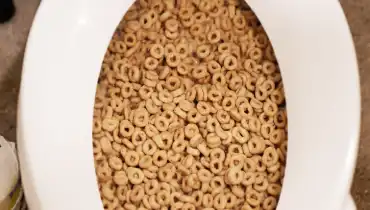Are You Capable to Flush Food in the Toilet?
Are You Capable to Flush Food in the Toilet?
Blog Article
What are your opinions about Is it safe to flush food (especially rice) down the toilet??

Intro
Many individuals are typically faced with the problem of what to do with food waste, particularly when it concerns leftovers or scraps. One common question that arises is whether it's okay to purge food down the bathroom. In this short article, we'll delve into the reasons why individuals might take into consideration flushing food, the effects of doing so, and different methods for proper disposal.
Reasons that people could take into consideration flushing food
Lack of awareness
Some individuals might not understand the prospective damage brought on by purging food down the commode. They may wrongly think that it's a harmless method.
Convenience
Purging food down the bathroom may feel like a fast and easy option to taking care of undesirable scraps, particularly when there's no close-by trash can readily available.
Idleness
In many cases, people may simply pick to flush food out of sheer laziness, without thinking about the consequences of their actions.
Effects of flushing food down the commode
Ecological impact
Food waste that ends up in waterways can contribute to contamination and injury marine communities. In addition, the water used to purge food can strain water resources.
Pipes problems
Purging food can lead to blocked pipelines and drains, triggering costly pipes repairs and inconveniences.
Sorts of food that must not be flushed
Coarse foods
Foods with coarse structures such as celery or corn husks can get entangled in pipelines and trigger clogs.
Starchy foods
Starchy foods like pasta and rice can soak up water and swell, resulting in blockages in pipes.
Oils and fats
Greasy foods like bacon or food preparation oils should never be flushed down the commode as they can strengthen and create blockages.
Appropriate disposal techniques for food waste
Making use of a garbage disposal
For homes equipped with waste disposal unit, food scraps can be ground up and flushed through the plumbing system. Nonetheless, not all foods appropriate for disposal in this way.
Recycling
Particular food packaging products can be reused, decreasing waste and decreasing ecological influence.
Composting
Composting is an environmentally friendly method to deal with food waste. Organic materials can be composted and used to enrich soil for horticulture.
The value of proper waste management
Lowering environmental injury
Appropriate waste administration practices, such as composting and recycling, aid reduce air pollution and protect natural deposits for future generations.
Securing plumbing systems
By preventing the technique of flushing food down the commode, property owners can avoid costly pipes fixings and preserve the integrity of their plumbing systems.
Verdict
In conclusion, while it may be tempting to flush food down the toilet for convenience, it is very important to understand the potential consequences of this activity. By taking on correct waste monitoring methods and disposing of food waste responsibly, people can contribute to healthier pipes systems and a cleaner atmosphere for all.
FLUSH FOOD DOWN THE TOILET?
FLUSHING FOOD CAN CAUSE BLOCKED DRAINS IN YOUR HOME
All of the plumbing fixtures in your home are connected to the same sewer pipe outside of your home. This outdoor sewer pipe is responsible for transporting all the wastewater from your home to the Council sewer mains. Even small pieces of food that go down the kitchen sink can cause problems for your sewer. It should therefore be obvious that flushing larger bits of food, such as meat, risks a clog in either the toilet itself or the sewer pipes. Flushing greasy food is even more problematic because oil coagulates when it cools, coating the interior lining of your pipes.
THE TOILET IS NOT A BIN
Food isn’t the only thing that people shouldn’t be flushing down the toilet. People use the toilet to dispose of all kinds of things such as tampons, makeup wipes, dental floss, kitty litter and even underwear. Water goes to great lengths to educate residents about the high costs and stress placed on wastewater treatment systems simply from people flushing the wrong stuff down the toilet. It costs taxpayers millions of dollars each year, and homeowners thousands in blocked drain repairs.
FLUSHING FOOD IS A WASTE OF WATER
Flushing food is a waste of our most precious resource - water. In June this year Level 1 water restrictions were introduced to protect water supply from drought conditions. Much of New South Wales continues to be affected by prolonged drought with recent figures revealing up to 97 per cent of the state remains in drought. Depending on whether you have a single or dual flush toilet, every single flush uses between five and 11 litres of water. In the current climate this is a huge amount of water to be wasting on flushing food that should be placed in the bin (or better yet, the compost).
https://www.jabplumbingsolutions.com.au/blog/can-you-flush-food-down-the-toilet

We hope you enjoyed reading our excerpt about Flushing Food Down the Toilet?. Thanks so much for taking a few minutes to read our piece of content. Do you know about somebody who is serious about the subject? Take a moment to share it. We cherish your readership.
Click Here Report this page